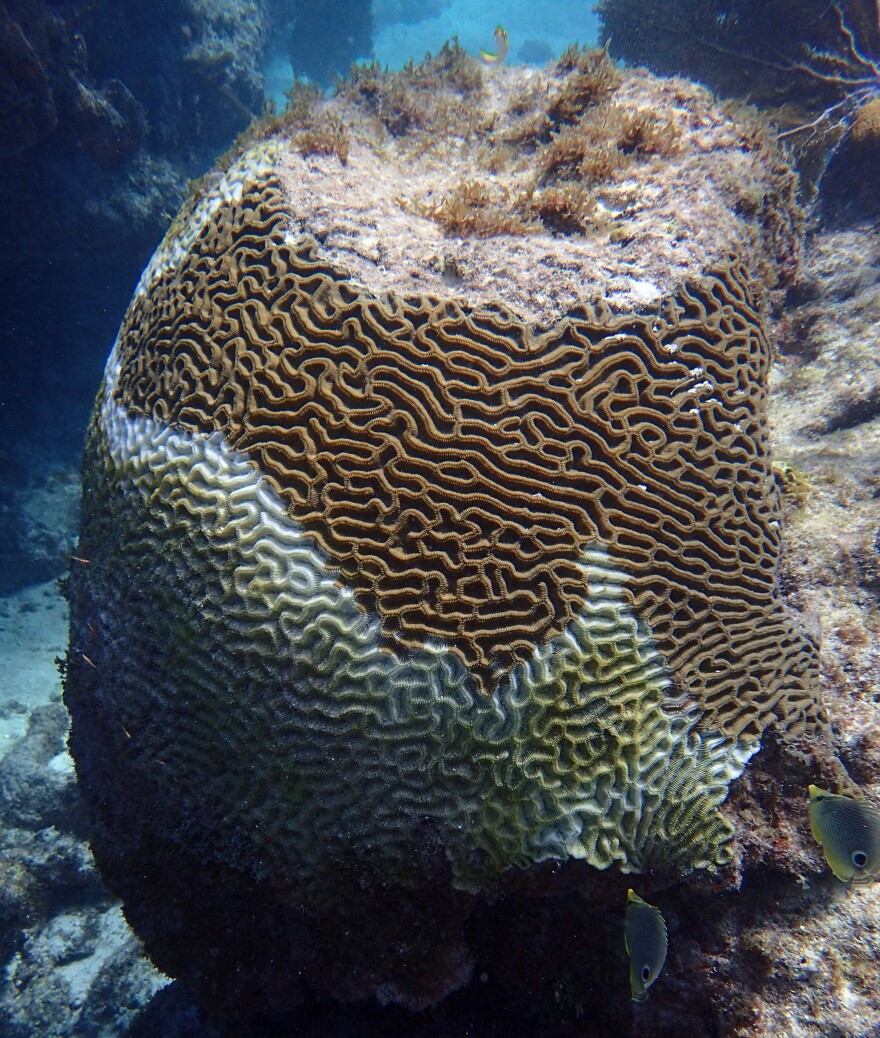As stony coral disease carved a catastrophic path along Florida’s reef tract and parts of the Caribbean — decimating the boulder corals that help build reefs — scientists raced to collect healthy corals, before the disease struck, and untangle genetics to breed more resilient offspring.
Now, they are working on another piece of the puzzle: determining whether the corals can survive in the disease’s wake.
“There's concern that if there's disease out there, where are we going to plant these corals that may get the disease or expose those wild colonies to disease,” said Martine D'Alessandro, a University of Miami researcher at the Rosenstiel School of Marine and Atmospheric Science working on the project. “The idea is to see what happens when we plant these corals, if disease does become introduced or if the corals we plant are more susceptible.”
�۰����²�is committed to providing South Florida with trusted news and information. As the pandemic continues, our mission is as vital as ever. Your support makes it possible. Please today. Thank you.
Over two days in May, teams of university and nonprofit scientists, led by the Florida Fish and Wildlife Conservation Commission and Florida Department of Environmental Protection, planted more than 1,100 colonies — including mountainous star coral, knobby brain coral and great star coral — onto reefs at two dozen sites from Martin County to the Keys.
“Understanding where and when it is safe to start out-planting species that are susceptible to stony coral tissue loss disease again is a major first step in restoring the resilience of Florida’s coral reef,” said FDEP Deputy Secretary Adam Blalock in a statement, calling the project the first of its kind.
Since it was first detected off Virginia Key in 2014, stony coral disease has spread across Florida’s reef tract, the only barrier reef in North America. It’s since spread to Caribbean and Bahamian reefs, becoming one of the most severe coral diseases on record. In May, it reached the Dry Tortugas, a remote protected area with little ship traffic that scientists had hoped would escape an infection. Scientists are still trying to determine how the disease spreads, but suspect ballast water from ships may move it around.

The pace and scale of the outbreak has lead to an international rescue effort and fast-paced research on how to better protect reefs under increasing pressure from pollution and warming oceans fueled by climate change.
Leading up to the reef-wide plantings, D’Alessandro said the team exchanged more than 6,000 corals tended to in labs. Many were rescued before they could be infected with the disease, with the goal of using them to rebuild reefs — no easy task for coral colonies that can sometimes grow larger than seven feet.
The largest colony of mountainous star coral, nicknamed "Big Momma" and located off Hollywood, was the size of a compact car and at least 300 years old, having survived centuries of hurricanes and the transformation of Florida’s coast from sleepy dune and mangrove-lined beaches to condo canyons. Stony coral disease, , killed it in just a few months.
New techniques developed by the Mote Marine Lab have allowed researchers to fragment coral that helped make the rescue possible, D’Alessandro said.
“They're so big and bulky, it was just challenging to transport them around. You would only be able to plant one large colony at a time,” she said.
By cutting them down to about one-inch squares, scientists are able to build up stocks in labs, continuing to fragment the colonies as they grow. The technique tripled growth rates, D’Alessandro said. Those fragments are then cemented to reefs, where they can continue to grow.

The race to rebuild reefs has also put pressure on labs to become creative, turning them into construction zones.
“I didn't even know the name of half the tools we have before I started working with this lab,” D’Alessandro said. “We buy a lot of strange things like cooking ware. We buy pastry bags to hold cement. We buy farming equipment to track our corals. So we buy all sorts of bizarre things.”
The newly planted corals will be monitored monthly until July 2022 to see how they fare and whether they help lure back fish and other wildlife reefs need to survive.
Sites were chosen because they had been used in the past or provided the best opportunity for coral to survive, D’Alessandro said.
“The idea of this project is making sure that it's safe to add corals rather than adding corals to a system that's got active disease,” she said.
If the disease does return, she said, scientists will be closely watching how they respond and looking for species that may show signs of being more tolerant.





